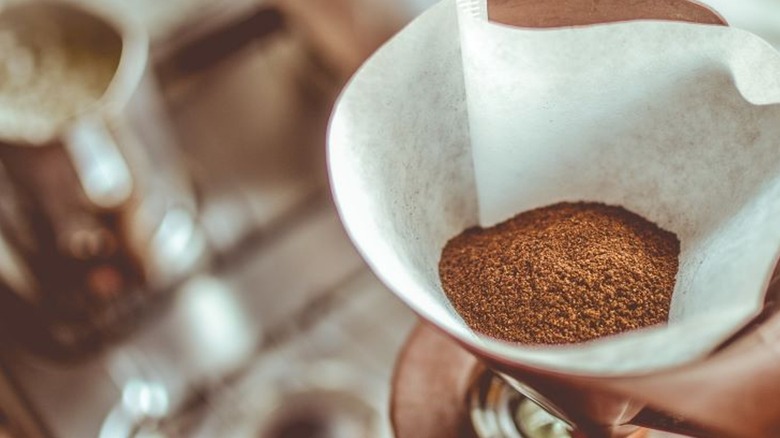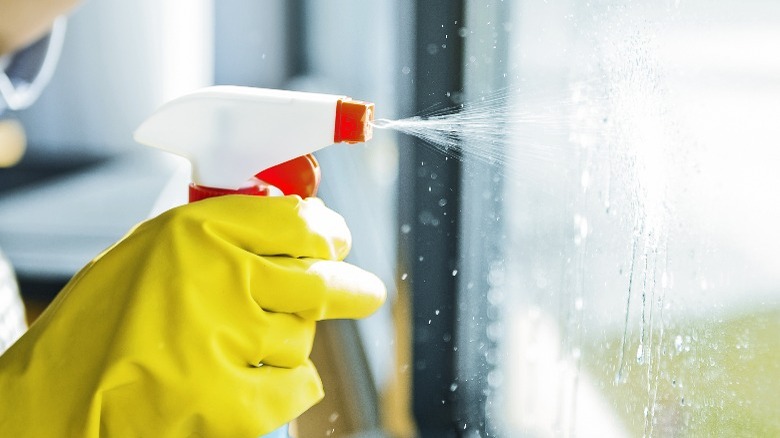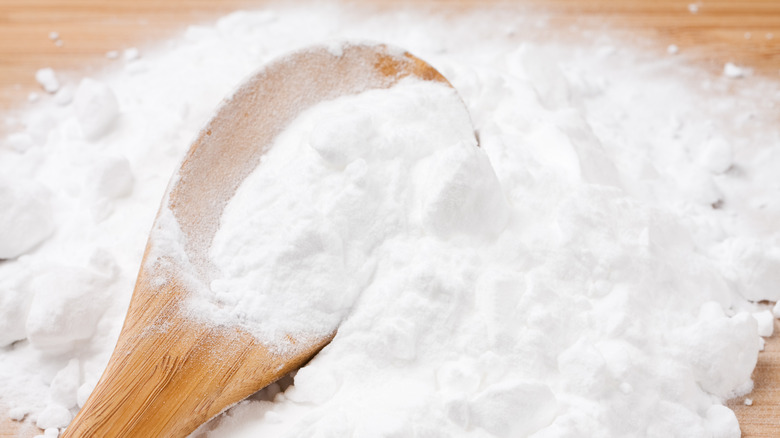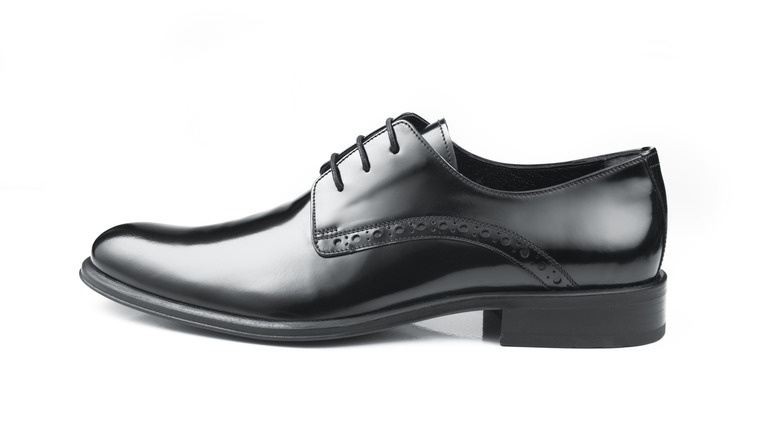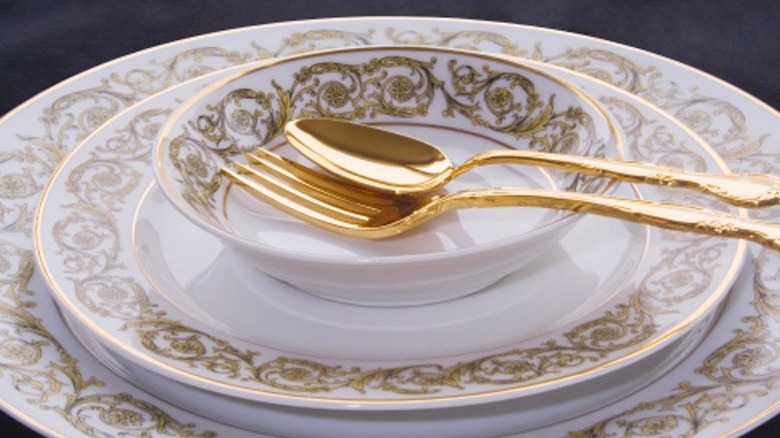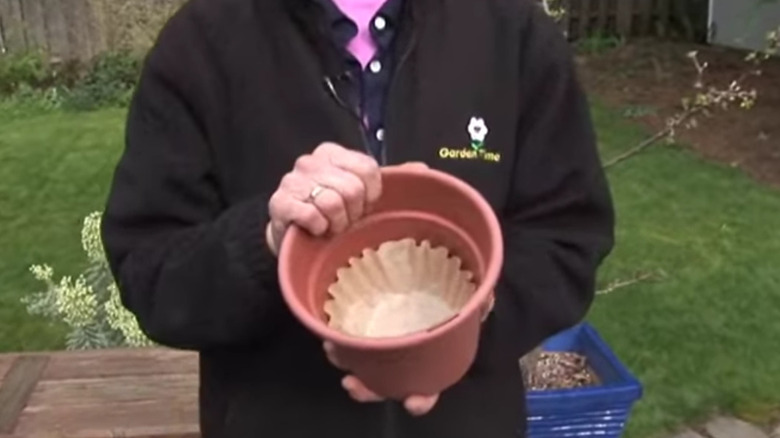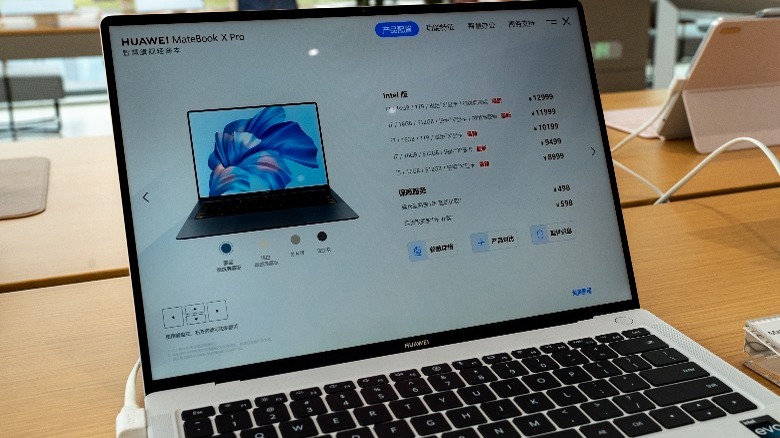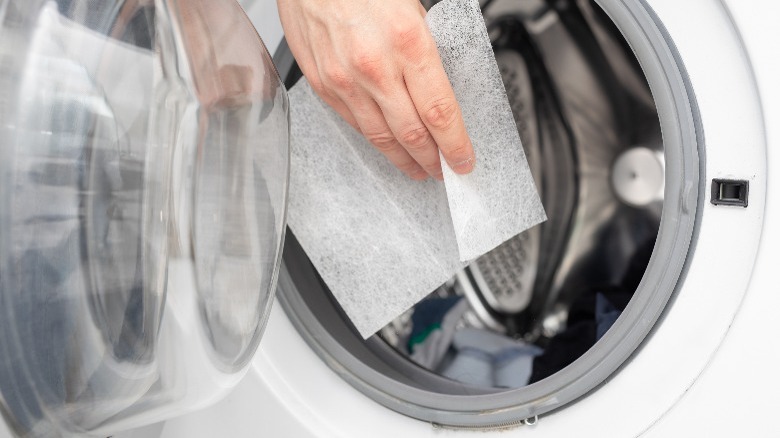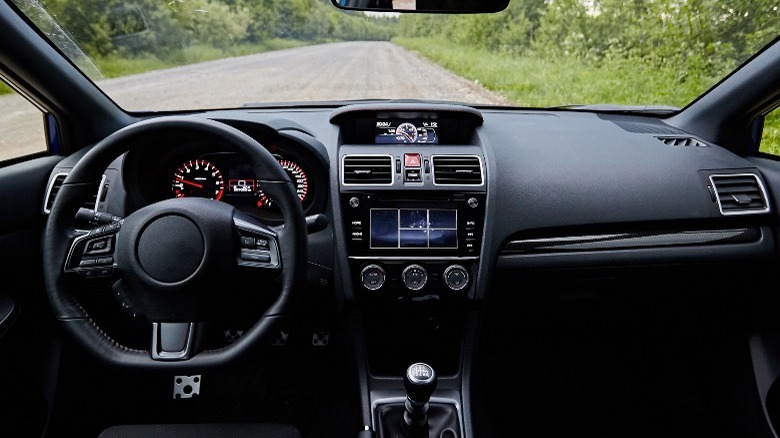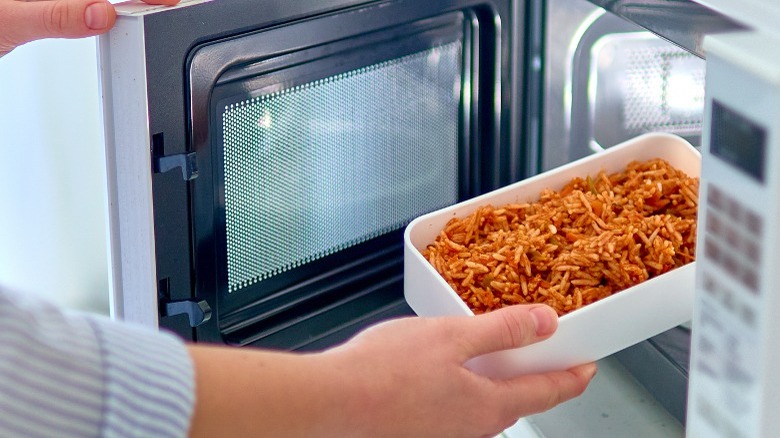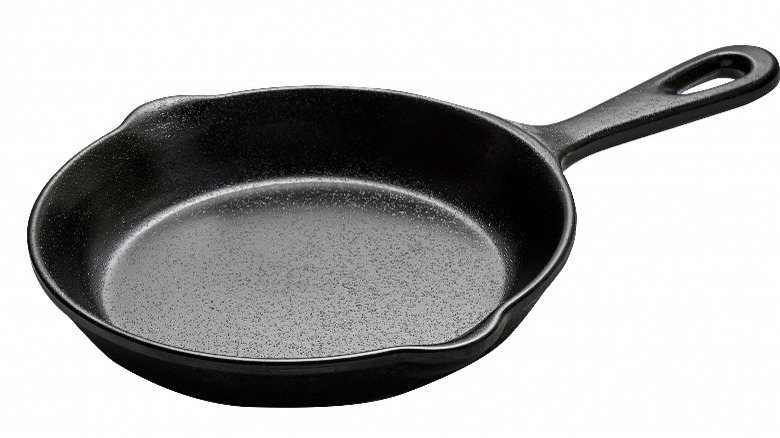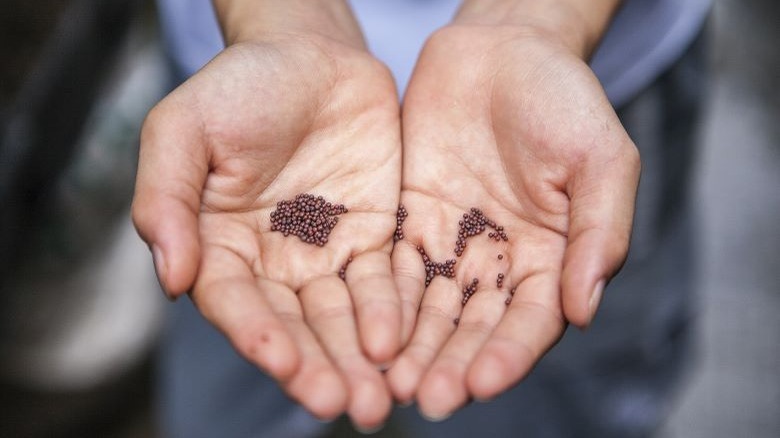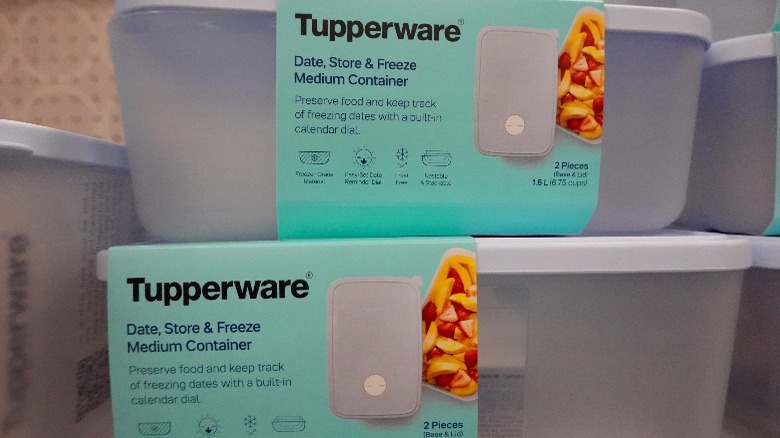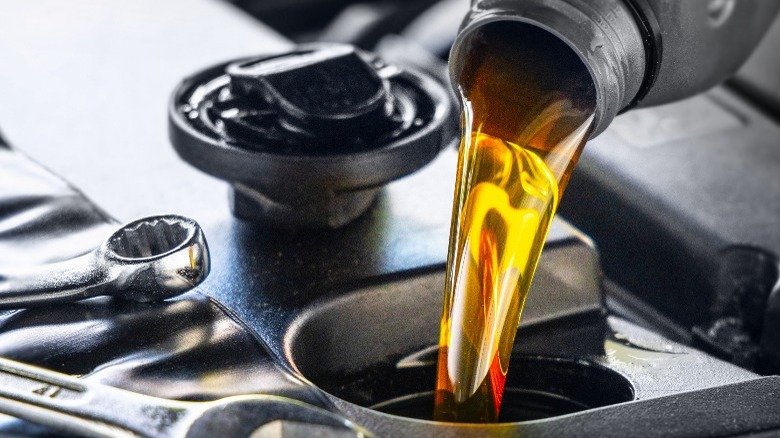Creative Uses For Coffee Filters Around The House
We may receive a commission on purchases made from links.
Paper coffee filters are sold in large quantities, and people often have way more than they might need. The good news is that these kitchen staples can be used for many other things besides brewing java, in and out of the kitchen. Of course, they're perfect for filtering coffee grounds, but they are inexpensive, creative substitutes that can save money in the home and garden.
What makes coffee filters so versatile? They filter out impurities, absorb excess liquid, and are lint-free. That's because they're made from natural materials like wood pulp processed into cellulose fibers. Those get combined with chemicals and water and are pressed into thin, lightweight, unbleached paper. It's hard to think of a more useful product — they can remove dust, prevent rust, and help things grow. People who love using things in other ways than they were intended for will love these creative hacks below. They'll also appreciate being able to save some money in the process, too.
Shine up mirrors and windows
Keeping mirrors and windows sparkling is a never-ending battle, but paper towels leave unsightly streaks. That's because they're textured and made with microscopic paper fibers. Those leftover streaks aren't the glass cleaner; they're fuzz and lint residue.
Newspaper is an alternative to paper towels, but that can leave ink marks everywhere. And besides that, people don't read printed newspapers as often as they used to, and they aren't cheap. Since coffee filters are lint-free and resistant to tearing, they come in quite handy for wiping down glass and mirrors in homes and cars. Spray on the cleaner as usual, and wipe the surface with a paper towel or microfiber cloth. Then, go over it with coffee filters to remove the streaks. Another option is to only wipe the cleaner away with coffee filters, but you'll want to use extra-large ones or a few at a time for larger windows and mirrors. They will shred after absorbing too much cleaner, so keep extras within arm's reach.
Make homemade sachets
A sachet is a small packet or bag that holds a small amount of material, like scented cotton balls, spices, or baking soda. Basket- and cone-shaped coffee filters lend themselves to being gathered up and secured at the top, and this feature can turn them into odor-absorbing and scented sachets.
It's common for people to stick opened boxes of baking soda in the backs of their fridges to keep odors under control. That's because baking soda (sodium bicarbonate) is a base solution with a pH of 8.3. It's alkaline, so it neutralizes acidic smells that come from rancid food. So instead of wasting an entire box of baking soda, drop a few tablespoons of it in a coffee filter and secure the opening with a twist tie. This should last for a while, and after that, it can be replaced. To add scent, drop in a bit of essential oil on top of the baking soda. Don't use anything too strong because it might not be appropriate for the inside of a fridge. Try making stronger-scented coffee filter sachets for other places like lingerie drawers, car consoles, and the insides of shoes.
Polish up leather shoes
Regular shoe polishing is important because regular care keeps them in better shape and makes them last longer. It's best to give them a thorough polishing every four to six weeks when worn often, but they can also be wiped down as needed with coffee filters.
For complete polishing, stuff the openings with coffee filters and remove the laces if there are any. You can skip this step if you don't have enough filters on hand, but it helps ensure the conditioner doesn't accidentally seep into the opening. If no shoe brush is available, wipe off the dirt and debris with another filter. Then, work a leather conditioner into the shoes with your fingers; this is the best way to penetrate it into the material. Allow the shoes to sit for 10 minutes, and remove any excess conditioner with another filter. The last step is to polish it up with one or two more coffee filters.
Protect dishes from scratches
A set of everyday dishes should be durable enough to get knocked around a bit, but they often end up with some scratches. This might not be bothersome, but marks on expensive china is a whole other story. Yet even though fine china can be more scratch-free and chip-resistant than everyday plates, there is a tendency to be more careful with them because of their sentimental and monetary value.
This is why handwashing fine china is a common practice in many homes, but the extra care often stops after that. The dishes, bowls, platters, and cups get stacked and stored in cabinets until the next time they're used. When they're taken back out, people wonder where new scratches have come from.
It happens when the pieces knock into each other in the insides of cabinets. To prevent this damage, line the bottom of the cabinet with coffee filters and place one between each dish and bowl. Fill each cup with a coffee filter when stacking these as well. This can also be done with everyday plates, but it's not worth the extra time for most people since they are constantly being used.
Line planters with them
Coffee grounds and dirt have two main things in common: They're both brown and need to drain properly for the best results. That second commonality is the reason for this creative and effective hack of lining pots with coffee filters. Planters should have a few drainage holes drilled into them to allow excess water to flow out, but often, the soil gets compacted in these holes and clogs them. And when the soil retains too much water, plants can develop yellowed leaves and deadly root rot.
A strategically-placed coffee filter will cover the holes and keep the soil where it should be while letting the water safely drain out. Simply place a clean one on the bottom of the planter before adding the soil and plant. Digging up and replanting an established plant with a coffee filter might be tricky but could be worthwhile if there is a drainage problem.
Dust off computer screens
Computer screens quickly accumulate dust that makes it harder to see things. Laptops are the worst offenders because they create an electrical charge that attracts even more dust. And besides that, grime and dead skin cells from fingertips get all over the screens.
Coffee filters are perfect for cleaning laptop and desktop computer screens since they're lint-free and soft enough not to scratch the surfaces. Bear in mind that they won't clean stains from these screens, though. If this needs to be done, dampen a microfiber cloth with rubbing alcohol and wipe the screen from top to bottom or left to right. Never spritz a glass cleaner or other spray onto these screens because the liquid can leech into the sides and cause damage. After cleaning the screen, let it dry and then tackle any residue with the coffee filter. If there are any old scratches on there, the best way to eliminate those is with an LCD scratch repair kit.
Shine stainless steel
Stainless steel products are commonly found in today's homes via small and large appliances, kitchen sinks, cookware, and furniture. They are finished with a directional grain that can hide minor imperfections like small scratches. The finish is strong, durable, and resistant to stains and rust but can be more vulnerable to dents and scratches. It can also be harder to clean than other materials because certain things make the original shine appear dull. A few examples include hard water spots, using abrasive cleaners and tools, and food residue.
Store-bought cleaning products that contain bleach make stainless steel look cloudy, so stick with plain dish soap and water. Diluted vinegar will also work just as well. Once the surface is wiped clean of dirt and oils, polish it thoroughly with coffee filters. The stainless steel will look like new again with that one extra step at the end.
Make DIY dryer sheets
Dryer sheets do more than soften clothes; they also add lovely scents and reduce annoying static cling. But the best ones don't come cheap. A 200-count package of Downy Infusions sells for around $9.00 on Amazon, and even though they do the job, there is a less expensive way to get it done. The average sheet is made from cellulose fibers or polyester and contains fabric softeners and lubricants that heat up in dryers. The softening ingredients get released into the fabrics, resulting in fluffy and nice-smelling clothes. But since some dryer sheets are made from cellulose fibers, DIY versions can easily be made with coffee filters.
The quickest way to do this is to grab a filter and spritz it with vinegar. It softens clothes without any harsh chemicals. Then, add a favorite essential oil like lavender or vanilla to counteract the strong smell. These sheets can be made as needed, or you can whip them up and store them in a tightly sealed container like a mason jar.
Clean your car's dashboard
Car interiors are breeding grounds for dust thanks to humans, pets, shopping bags, and countless other things entering and exiting. Most dashboards are black or dark, meaning dust and lint show up fast. It's even more noticeable when the sun is shining on them. Keep some spare coffee filters in the glove compartment because these things work magic on car and truck dashboards. Use them to quickly wipe away residue, resulting in a streak-free finish.
When you want to add shine to the dash, spray olive oil onto a coffee filter and then start wiping. Not only will it pick up dust, but it will leave an attractive sheen. But don't apply olive oil to leather seats because leather is permeable, and the oil will soak into it and leave spots. Feel free to use the coffee filters to wipe down the mirrors and windows, too; just don't oil them first.
Strain things with them
Here is even more good news: Coffee filters can strain plenty of other things besides coffee. This is done with a DIY straining station that gets made according to the task at hand. To strain wine that has bits of cork in it, secure a coffee filter on the top of the bottle with a rubber band and pour out the wine into a glass. If cork bits show up in the wine glass, pour it into another glass with the filter on top.
Feel free to use coffee filters to strain out other things like lemon juice seeds, soup stock, and oil that will be reused. But the thicker the liquid, the sturdier the coffee filter needs to be. Be careful with heavy oils and broths, because those could tear through the material. And always secure the filter to the container because if it isn't stretched and held tight enough it will collapse.
Prevent microwave splatters
Anyone who uses a microwave has dealt with food and drink splatters, and when not cleaned up promptly, those messes harden up like concrete and are not easy to clean. Splatters happen because microwave emissions heat up whatever's being cooked, and when the boiling point is reached, foods and drinks bubble up and sometimes even explode.
There are microwave container covers designed to prevent splatters, but there's no reason for that since things can be covered up with coffee filters. Just place one or more on top of the container. The steam will escape through the fibers, and the filter will prevent splatters from coming out. And if the filter doesn't get stained, feel free to use it more than once. Just keep a few in a drawer by the microwave, and this quick, preventative habit will keep the interior much cleaner. You're welcome.
Prevent iron and non-stick cookware from rusting
Although oil can ruin leather, it is an excellent rust-fighter that can protect iron and non-stick cookware. It creates a protective barrier that keeps out moisture, a leading cause of corrosion. Oil is messy, though, and when it gets on hands, sponges, and fingers, it should be washed with a good amount of soap and water. Applying oil with paper towels is better, but that can leave behind a pulpy residue. So instead, use coffee filters.
This hack only requires a thin oil coating, so either spray some on or dampen the filter with a small amount. Once the pans are oiled and ready to be stored, use filters to help organize them. Put a few between each pan to help prevent scratches and to absorb any humidity in the cabinets. The cookware will be less susceptible to rust formation with less humidity around them. Metal fixtures around the house can also be oiled periodically with coffee filters.
Grow seeds in them
Yes, this actually works: Seeds will germinate in coffee filters, given the right conditions. This is a simple way to start plants indoors ahead of spring planting. To get started, add several seeds into a barrel-shaped coffee filter and spritz it with water. Then, fold the filter loosely and place it in a sealable plastic bag. Or, push the filter into the bottom of a cup, add the seeds, and pour on some water. The bag or cup can be left on a windowsill or somewhere else that gets adequate light and warmth.
Gardeners using this method with paper towels find that the germinated seeds get stuck between the layers. This doesn't happen with coffee filters, and the plant's roots won't be caught, either. Check the seeds every few days for growth and when the time comes, carefully remove the seedlings from the filters and plant them as usual.
Line food containers for easier cleanup
No one can deny the usefulness of Tupperware containers, but they can be a real pain to wash and dry. Dishwashers can warp them out of shape, so people often clean them by hand. But residue from things like oils and tomato sauce is hard to remove, so repeated soap-and-water soakings are par for the course. And this is only half the job since the darn things take forever to air dry on dishracks.
There is a way to minimize this kind of frustrating cleanup, and it's a great habit to adopt. Line the bottoms of these containers with coffee filters, and the job will be half done before you get started. They'll absorb excess oils and liquids so they don't bond with the plastic. Coffee filters are also great for lining cookie tins and other food containers because they also catch crumbs and other little bits.
Pack up fragile items
Small, fragile items like glass Christmas ornaments and ceramic keepsakes can easily break when not handled and packed with care. Coffee filters can pitch in because they can be wrapped around little objects to provide a protective barrier. This is perfect for packing up holiday items and for moving.
Cone-shaped coffee filters work best for packing fragile things. For small items, just slide one into the filter and tuck in or tape up the open end. Or, use a second filter to close up the opening before folding and taping. Add more filters for extra cushioning, especially when storing several fragile pieces together in one container. And unless the container is labeled and has all the same things inside, it makes sense to grab a marker and write on the coffee filter before using it to show what is inside before opening. Coffee filters can also be used like packing peanuts — crumple them up and add them in between items for protection.
Hold messy food
Hand-held food like pitas, tacos, and sandwiches will always be popular fare, but they can sure get messy. This is especially true when sauces and condiments are leaking from the sides. Everyone has dealt with a leaky taco or burrito at least once in their lives. But eating them needn't be so awkward since coffee filters can step in to keep them put together.
Use coffee filters as quick, easy, and disposable food wrappers for these meals. Kids of all ages like using them, and they don't need to be washed (the filters or the kids). Coffee filters can also fill in for small bowls and plates, as long as the food isn't too wet. They're well-suited for snack foods like popcorn and pretzels and will save on cleanup time. A coffee filter can also hold a drippy ice cream cone. Messy food stands no chance when there's a coffee filter around.
Use cone-style coffee filters for oil
Cone-style filters are made for certain coffeemakers and are sometimes thicker. They are good to have when working with oil in a kitchen or car, but know that they can cost more than basket-style filters. They have wide openings and tapered bottoms, and this unique shape makes them perfect for pouring liquids like oil into narrow spaces. This means less spillage and cleanup. Just cut off a bit of the closed end, and presto — a homemade funnel. To add motor oil to an engine, find the fill location and remove the cap. Hold the narrow opening of the funnel inside the oil reservoir, and pour in 25% of the oil. Once that goes down, repeat the process until the oil can is empty.
Indoors, use a cone filter to transfer oil from large bottles into smaller ones. But always throw out the filter when finished because repeated usage will make it greasy and dirty, and it will weaken until it tears.
